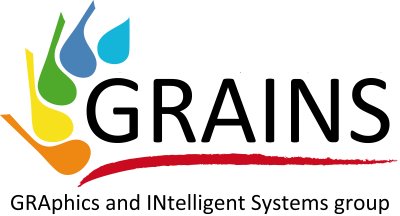-
Computer Graphics
Several research activities of the GRAINS groups are related to the Computer Graphics (CG). Optimization of photorealistic rendering algorithms such as the ray-tracing plays a key role for several applications; the research group investigated solutions to speed-up ray-tracing and ray-casting algorithms by using multiprocessor and distributed architectures (grids and P2Ps).
Another very challenging research topic focuses on remote visualization of complex 3D geometries on different categories of devices. Devices such as smart-phones, PDAs, tablet PCs can take advantage from a client-server paradigm in order to use remote computational resources (e.g. a cloud architecture) for the processing of 3D scenes. In this case, a lot of research is aimed to investigate suitable solutions for the transmission of still image sequences or videos from the remote graphics server to the client device. Quality, latency and bandwidth occupation can be tuned in order to provide users high quality of service as well as satisfactory quality of experience. Customization of Graphics User Interfaces (GUIs) is a topic partially related to the above mentioned remote visualization research area. GUI re-using and graphics element detection/classification are just some issues of a deeper investigation concerning the control of remotely running applications.
New visualization paradigms are also investigated for representing scientific information. In particular, novel methodologies, derived from texture synthesis algorithms (e.g., the Linear Integral Convolution), are considered in order to display a set of adjunctive scalar values to vector field representations. Procedural textures (for instance, bump mapping) are combined with traditional streamline computational techniques in order to present the user an enriched data representation.
The GRAINS group is very active is the design and development of augmented and virtual reality based applications. In particular, augmented reality (AR) technologies are considered in order to propose innovative paradigms for maintenance, repair and assembly tasks in industrial contexts. Nowadays solutions are extremely customized and vertical; on the other hand, the research is focused on providing flexible and easily reconfigurable procedures. Both mobile and special purpose AR devices are considered, thus addressing broad spectrum of potential users.


